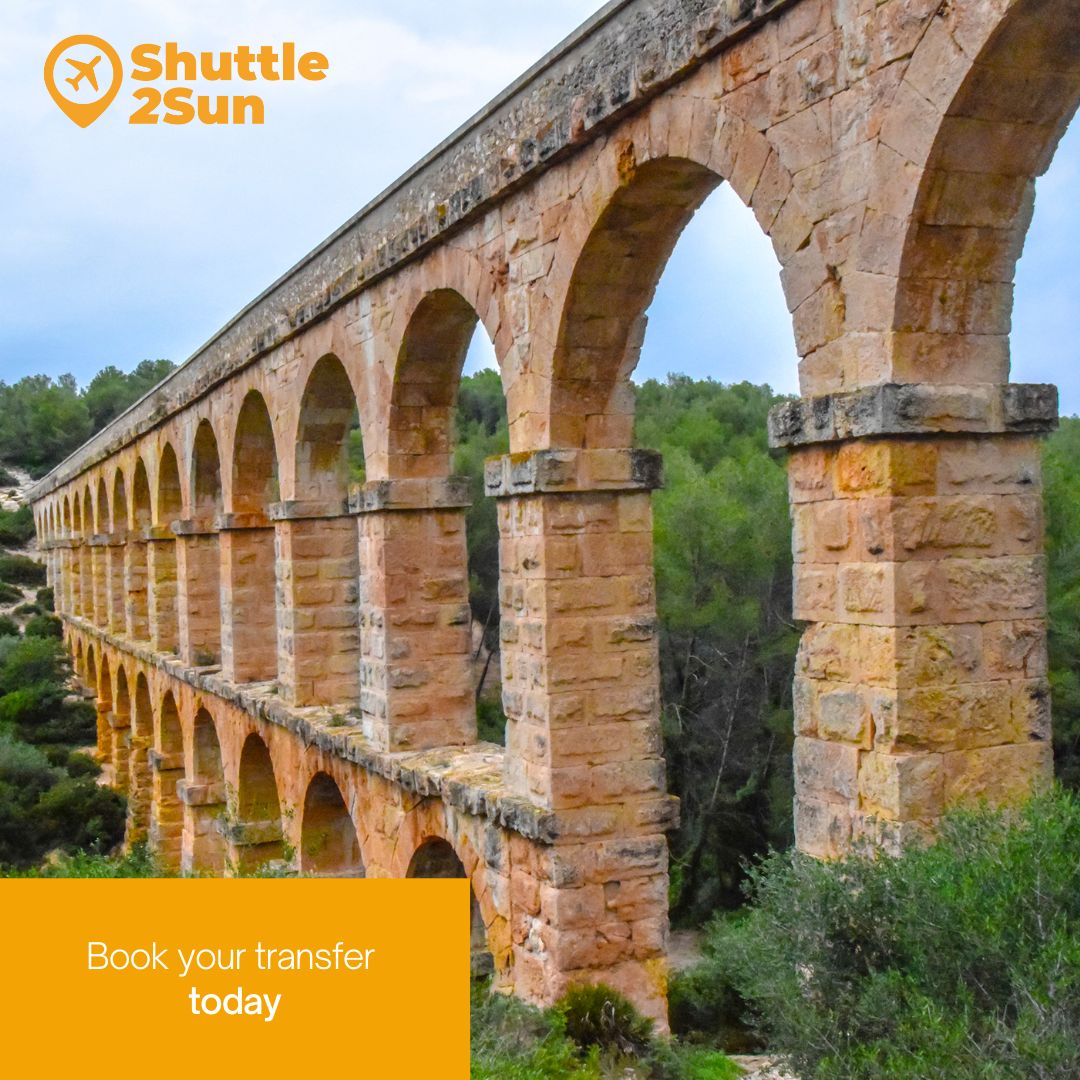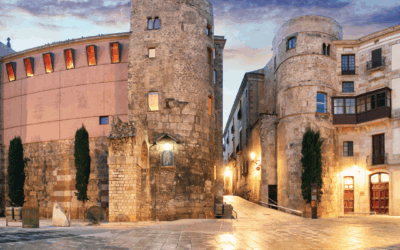In previous posts we explained the Cathedral of Tarragona, now it is the turn of the El Pont del Diable. Also known as the aqueduct of Les Ferreres, it was, and still is, a Roman engineering work two millennia old. Tarragona was the most important city on the peninsula during Roman times and still preserves many elements from that period. This aqueduct is still a good example of this as it is one of the most intact aqueducts in the world.
If you are planning to visit the Costa Dorada, you cannot miss this monument. Shuttle2Sun offers private services to the town of Tarragona. Keep reading this article to know the Devil’s Bridge of Tarragona and its history.
Tarragona or ancient Tarraco
Tarragona, or ancient Tarraco, played a very important role in the Roman conquest of Hispania. Its port became one of the main ones in the western Mediterranean. Like all great cities, it was built next to a river, so that the city could transfer its waters to the population. Thus, the Pont del Diable was built in the first century BC, in the time of Emperor Augustus. Another important aqueduct in the country is the one in Segovia, but the one in Tarragona is the best preserved.
Origin of the aqueduct
Located beside the Francolí river, this aqueduct was responsible for bringing its water, and that of the Gaiá river, to the ancient Tarraco located 15 kilometres away. The construction process consisted of using large ashlars of stone laid dry, without using mortar as was customary. The construction technique used was “opus quadratum“, which provided greater precision and accuracy in the construction of this two-storey aqueduct. Rising to a height of 27 metres, one less than the Segovia aqueduct, it consists of 25 arches at the top and 11 arches at the bottom. It is currently 200 metres long and about 26 metres high.
There are several legends that explain the origin of the name. One of them explains how a young man was starting to build the aqueduct when strong winds and storms destroyed it.

Because of the desperation that overcame the builder, who had built up to two rows of arches, he assured that only the Devil could build a bridge that would last more than a thousand years. Having said this, the Devil appeared and promised to build the bridge that very night with stone from the Mèdol quarry, so that the construction would last forever. In exchange, the young man offered him thirty bags full of gold and silver coins, but he did not want money, but the soul of the first person to drink the water from the aqueduct. So, the master and the workers, faced with this request, decided to come up with another plan to get out of the situation. So, they made a donkey drink from the water and the Devil could do nothing but take its soul and leave.
There is also another version where the Devil appeared and promised to build the bridge in one night, finishing it before the roosters crowed, in exchange for a maiden. This maiden’s fiancé, refusing to give up his partner, woke up all the roosters by imitating their crowing before the scheduled time. Thus, not having been able to finish the construction of the bridge, the Devil fled without getting the maiden.
Either version mentions the appearance of the Devil, which is why this bridge is popularly known by this name. Besides, the name produces more impact than if it had been better known as the aqueduct of Les Ferreres, right?
Location
It is very easy to reach it, from the Ap-7 motorway in the direction of Tarragona you can see a sign indicating its location and a small rest area where you can park your car and visit the monument. It can also be reached from the N-240 road towards Valls, very close to the Sant Salvador neighbourhood. Once parked, next to the car park there is a path that leads into the forest. It is important to know that the access has a wooden footbridge designed for people with reduced mobility. If you follow the path, you can reach the upper part of the Devil’s Bridge and cross its 200 metres at a height of almost 30 metres, contemplating the views. There is also another path that takes you to the lower area, where you can cross its arches and get a closer look. There is also the option of visiting the bridge by night with a guided tour under the moonlight.
Apart from this Roman aqueduct, Tarragona has many other monuments in the city that can be visited. Being such an important city as it was in Roman times, it is very easy to find them just walking through its streets. Other highlights include the Roman circus, one of the best preserved in the world, the amphitheatre and the Forum Square, among many others. We recommend a guided tour where a professional will explain all the secrets and hiding places hidden in this important town on the Costa Dorada.
Now you know the importance of this Roman aqueduct and that it was a fundamental piece for the ancient Tarraco. If you are planning to visit it and discover its history, remember that Shuttle2Sun offers private transfer services from Barcelona airport, Reus airport, Girona airport or AVE Camp de Tarragona train station.



